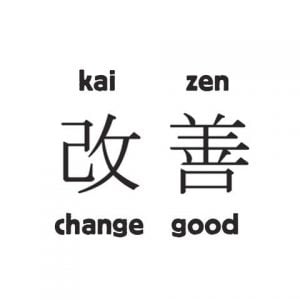The word kaizen is quite literally a foreign word to most Americans, it means improvement. Attending a kaizen, or an improvement event, may also be a foreign concept to some, especially to those that have never participated in one.
Two weeks ago, we discussed four things you probably didn’t know about a kaizen, particularly targeted to help those who have never been apart of one. Here we’d like to cover four more things:
- Use your resources wisely – Part of the girl scout law says, “I will do my best… to use resources wisely.” When making an improvement, or improvements, it gets really easy to see fantastic countermeasures that could be a solve all if there was a good amount of money spent. However, we like to say that money is out of scope. It’s always better to try and find a solution utilizing the resources already available, it’s about creative thinking and problem solving. That’s why I think of the girl scout law for this, because it follows the same principle.
- Improvement requires teamwork – Kaizen events, often times are a lot easier when there is only a handful of people actually assigned to newspaper (to-do list) tasks, simply because it’s convenient for everyone else. However, this has a tendency to burden the single one or two people. But it takes a team to identify current state and future state, as well as to implement the improvements.
- Change is an evolution and not necessarily a revolution – One of the pillars that lean is built on is Continuous Improvement. This was intentional in order to represent continuous improvements. We identify our current state and then identify the ideal or future stat, but in order to get from current to future we have to take baby steps. The leap to the future state embodies many small improvements that need to be made over time rather than a single large improvement. The purpose of continuous improvement is to keep striving for the future, but allowing grace to step in and slow things down (See #4).
- Slow and Steady wins the race – Kaizen events often seem tedious, but this is because the majority of the time is spent trying to fully understand the current state, the problems coming from it and then understanding the root cause. This takes a considerable amount of time, because it slows the thinking down so that nothing is missed. Then you move on to identifying the future state. Once the future state is identified it gets really easy to start coming up with counter measure after countermeasure. Tying back to #3, it’s easiest to start with the first countermeasure in a series and then come back to the others later on.
The eight pieces that we’ve discussed are huge in understanding the culture within a kaizen event. These items are in alignment to our office, the Office of Continuous Improvement, and the ground rules that we practice in kaizen events on the Michigan Tech campus.
